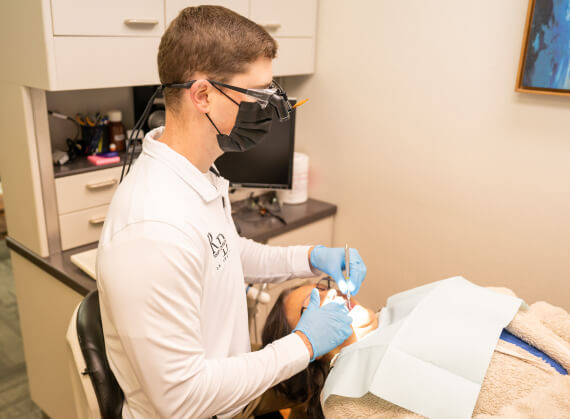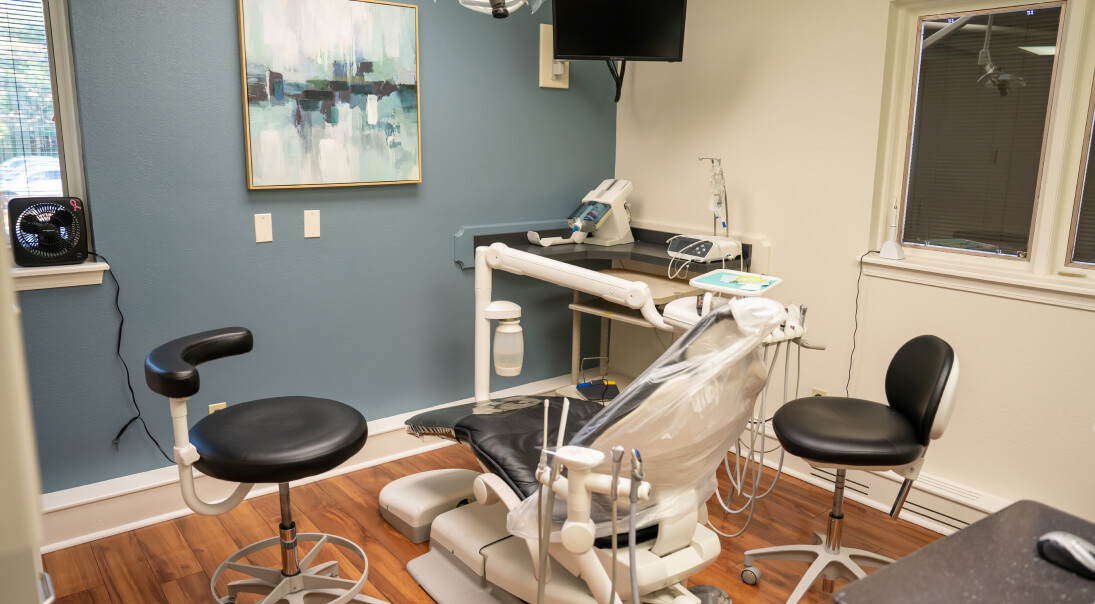Teeth Cleanings & Exams in Lenexa, KS

Even if your teeth and gums are the picture of health, scheduling regular appointments with your primary dental care provider is an important part of maintaining a healthy and beautiful smile. Our team at Rosehill Dentistry is happy to work with patients no matter where they are in their oral health journey, and we would be honored to work with you and your family. Contact our office today!
Contact UsWhat does your dentist look for during a dental exam?
During a dental exam, your dentist checks for signs of tooth decay, cavities, gum disease, and oral cancer. They inspect your teeth for cracks, chips, or other damage, and examine your gums for redness, swelling, or recession. Dr. Rickabaugh may also evaluate your bite and jaw for any signs of misalignment or temporomandibular joint (TMJ) disorders. X-rays are often taken to detect hidden problems like decay between teeth, impacted teeth, or bone loss. The goal is to identify issues early, ensuring prompt treatment and maintaining overall oral health.
What does a dental cleaning include?
A dental cleaning, or prophylaxis, includes several steps to remove plaque and tartar buildup from your teeth and gums. First, your hygienist uses special tools to scale and remove hardened tartar (calculus) from above and below the gumline. Then, they polish your teeth with a gritty paste to remove surface stains and smooth enamel. Finally, flossing removes any remaining debris between teeth, and a fluoride treatment may be applied to strengthen enamel and prevent decay. Cleanings help maintain positive oral health, prevent gum disease, and keep your smile bright!
When is a deep cleaning required?
A deep cleaning, or scaling and root planing, is required when there is evidence of gum disease, such as periodontitis. This procedure is needed when pockets form between the teeth and gums, trapping bacteria and plaque below the gum line. Deep cleaning involves removing tartar and bacteria from these pockets and smoothing the root surfaces to promote reattachment of the gums to the teeth. It’s usually recommended for patients with signs of moderate to severe gum disease, such as bleeding gums, gum recession, or bone loss, to prevent further damage and restore oral health.
Contact Us











